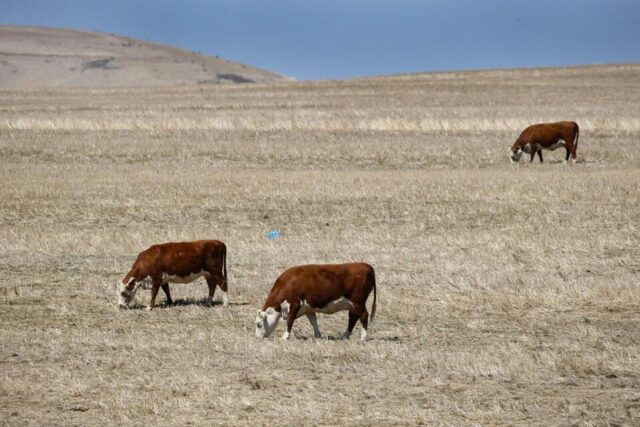The fears of an El Niño impact on food prices will be eased in the first quarter of next year, if the Agricultural Business Chamber’s prevailing positive outlook materialises.
THE FEARS of an El Niño impact on food prices will be eased in the first quarter of next year, if the Agricultural Business Chamber’s (Agbiz) prevailing positive outlook materialises.
The agricultural organisation’s chief economist, Wandile Sihlobo, said on Monday that in recent SA Reserve Bank Monetary Policy Committee communications, this weather phenomenon was rightly outlined as a potential risk to watch.
The chief economist said that if these weather conditions only intensify from March next year, as the South African Weather Service (Saws) recently noted, South Africa would have a good agricultural season, with ample supplies, which should help to ease the food price inflation concerns.
“While constant risk of weather will be top of mind over the coming months … overall, all else being equal, we remain optimistic about South Africa’s 2023/24 agricultural production performance,” Sihlobo said.
However, the organisation said it observed that concerns of an El Niño were not lost in the minds of South African farmers as they were watching this and remained concerned of its impact.
“What has provided comfort so far are the favourable rainfall we have received and the weather forecasts that consistently paint a promising picture that rain may continue until early March 2024, which is when the El Niño-induced dryness may begin. Be that as it may, the farmers we have interacted with were not deterred by these concerns.
“They believe that the South African Crop Estimates Committee’s estimates that 2023/24 summer grains and oilseed planting would increase by 2% to 4.5 million hectares will likely materialise. Moreover, the view from farm inputs organisations suggests that they also saw reasonably encouraging sales, further supporting the optimistic view about crop planting,” Agbiz said.
Sihlobo said these promising production conditions were also favourable for broader field crops, horticulture, and livestock and poultry sub-sectors. For the horticulture industry, all production was under irrigation, and the dam levels had improved notably and above average levels in most areas.
“Still, with consistent electricity interruptions, rainfall plays a pivotal role in supplementing the irrigation system. So, the expected showers over the next three months will support production conditions in fruit and vegetables.”
He said the same was true for the livestock industry, where the past rainy seasons improved the grazing veld and thus supported the industry.
“The next few months’ rainfall is vital to further improve the vegetation conditions and thus provide necessary feed when the time of need arises during the winter season and the dry patch of an El Niño. Notably, the livestock and poultry sectors mainly depend on feed availability and affordability, mostly yellow maize and soybeans. Therefore, the conducive production conditions for such crops, in turn, support the livestock and poultry industry.”
Agbiz cautioned that the one aspect worth monitoring was heat levels or temperatures as Saws has intimated that minimum and maximum temperatures were expected to be mostly above-normal countrywide.
“Given the challenging conditions and excessive heat presented to farmers in the northern hemisphere, this will be something livestock and poultry farmers will have to watch and try to find ways to minimise animal heat stress. Assuming the positive outlook we have painted above materialises,” Agbiz said.
According to the National Agricultural Marketing Council (Namc) Food Basket Price Monthly for November 2023, published on Monday, the Namc’s 28-item urban food basket’s costs increased by 10.1% in October this year compared to the same period last year, reaching R1 221.52 compared to R1,197.68, with a monthly (September 2023–October 2023) increase of 2.0%.
“Between October 2023 and October 2022, among these 28 items, 19 witnessed price increases that exceeded the inflation target set by the South African Reserve Bank of 6%. Notable products in this category include potatoes, which experienced a substantial price surge of 63.8%, followed by bananas (42.1%), Ceylon/black tea (29.2%), white sugar (23.9%), rice (22.5%), polony(19.9%), onions (19.6%), instant coffee (16.2%), Cheddar cheese (15.1%), apples (13.9%), full-cream milk (12.6%), baked beans (12.5%), peanut butter (11.1%), chicken giblets (9.7%), oranges (9.1%), fish (8.3%), cabbage (7.2%), maize meal (7.0%), and IQF chicken portions (6.3%).”
– BUSINESS REPORT








